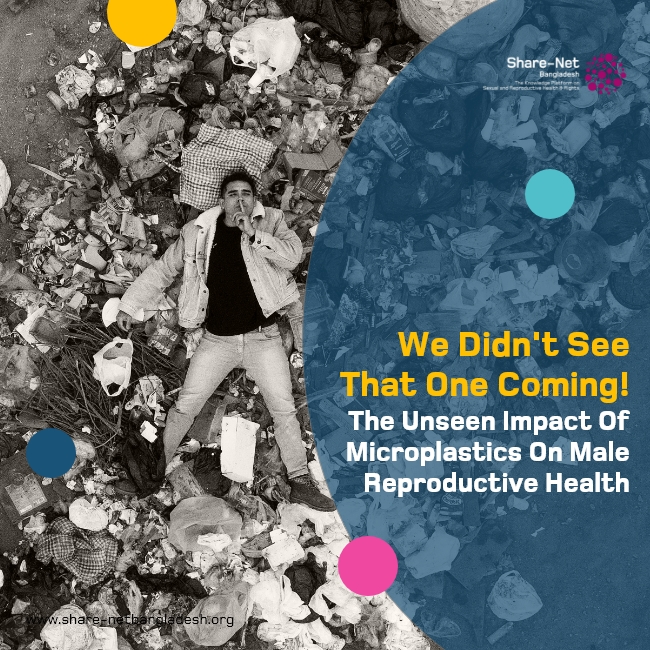We Didn’t See That One Coming! The Unseen Impact of Microplastics on Reproductive Health
In a startling discovery, scientists from Qingdao University found microplastics in every semen sample they tested, a finding with significant implications for sexual and reproductive health. “The widespread presence of plastic contaminants is alarming, mainly due to the implications they may have on male reproductive health,” the researchers warned. This revelation comes amid a global decline in fertility rates, raising concerns about the role of environmental pollutants in reproductive health issues.
Microplastics are tiny plastic particles less than 5 millimeters in size that originate from the breakdown of larger plastic items and synthetic textiles. These particles have infiltrated every part of our planet, including the food we eat, the water we drink, and the air we breathe. Once inside the body, they can travel through the bloodstream and accumulate in organs and tissues, including the reproductive system.
The study’s findings have profound implications for the sexual and reproductive health and rights (SRHR) movement, which emphasises the importance of safeguarding these aspects of health. The researchers analysed semen samples from 36 healthy men and found microplastics in every sample. Notably, eight types of plastics were identified, including polystyrene and polyvinyl chloride (PVC), with a significant link between PVC microplastics and decreased sperm motility. Reduced sperm motility is a critical factor in infertility, suggesting that exposure to microplastics could be a contributing factor to the global decline in fertility rates.
The presence of microplastics in semen underscores the urgent need to address plastic pollution as a public health issue. Microplastics can cause systemic inflammation, hormonal disruption, and genetic damage, all of which can impact reproductive health. The chemicals released by these particles, such as phthalates and bisphenol A (BPA), are known to interfere with hormone function, potentially leading to a range of health problems, including cancer and reproductive issues.
This discovery aligns with the goals of the Sustainable Development Goals (SDGs), particularly SDG 3 (Good Health and Well-being) and SDG 12 (Responsible Consumption and Production). Reducing plastic pollution and improving waste management practices are essential steps toward achieving these goals. Therefore protecting sexual and reproductive health from environmental contaminants is crucial for ensuring healthy lives and promoting well-being for all ages.
The potential impacts of microplastics on reproductive health also highlight the need for increased scientific scrutiny and public awareness. Governments and health organisations must prioritise research into the effects of microplastic exposure and develop strategies to mitigate these risks. Public health campaigns can play a vital role in educating people about the dangers of microplastics and encouraging actions to reduce plastic use.
Moreover, the SRHR movement can leverage this information to advocate for stronger policies that protect reproductive health from environmental pollutants. Ensuring access to safe environments and clean resources is a fundamental aspect of sexual and reproductive rights. Addressing microplastic pollution is not only about protecting the environment but also about safeguarding human health and ensuring the well-being of future generations.
In conclusion, the detection of microplastics in every semen sample tested is a wake-up call. It highlights the interconnectedness of environmental health and human health, emphasising the need for comprehensive strategies to reduce plastic pollution. By taking action now, we can protect reproductive health, support the SRHR movement, and work towards achieving the SDGs, ensuring a healthier future for all.
Source: Earth.Com
Picture Credit: Jordan Beltran/Unsplash



